Simple and complex machines help us to do work. The _________ is an example of a complex machine.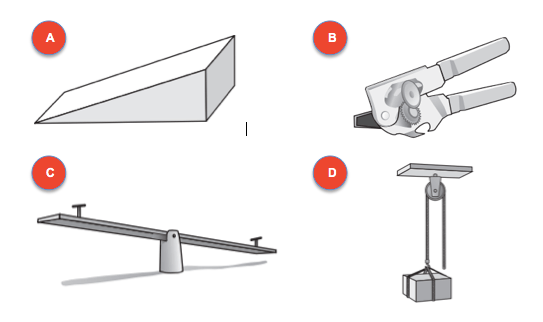
What is B, a can opener?
This type of rock whose name comes from the Latin word for fire is formed when magma or lava cools and becomes a solid.
What are igneous rocks?
The three states or phases that matter can be found in.
What are solids, liquids, and gases?
This type of energy transfer occurs when a beaker of water is heated on a hot plate
A. light to heat B. chemical to heat
C. electrical to heat D. magnetic to heat
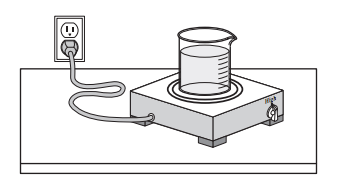
What is electrical to heat?
Our earth is moving. Of the following statements, which best describes how Earth moves in the six months from June 21 to December 21?
A: Earth makes half rotation on its axis
B: Earth moves farther from the Sun
C: Earth makes half a revolution around the Sun
D: Earth begins to rotate more slowly in its orbit
What is C? The Earth makes half a revolution around the Sun.
This group of organisms prefers to eat green grass and other types of plants.
What are herbivores?
Of the following statements which best describes the climate of an area rather than its weather conditions.
A. The summers are hot and humid.
B. The temperature at noon was 86°F.
C. Total rainfall on April 9 was 2 inches.
D. Strong winds are expected tomorrow evening
What is A, summers are hot and humid?
An object has many forces acting on it. When an object is in motion the force of friction is always acting in the _____________ direction of the motion.
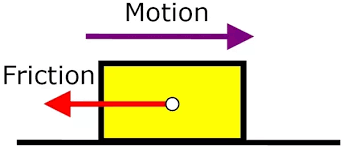
What is opposite?
Rainwater moving soil down a hill and wind blowing sand on a beach to a different area are two examples of this process that changes the surface of our earth.

What is erosion?
All matter has these two properties. It is how we define it.
What are has mass and volume?
This process makes it possible for plants to use energy from sunlight to produce their own food?
What is photosynthesis?
The spinning of the Earth on its axis is known as this movement.
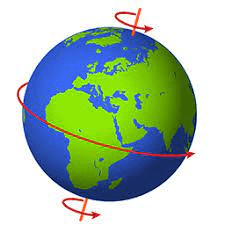
What is a rotation?
All energy in food chains and food webs begins with the _________.
What is the sun?
A student is watching a local television weather report for Gloucester, Massachusetts. Of the following which is most likely included in this weather report?
A. the speed of currents in a river
B. the amount of moisture in the air
C. the depth of currents in the ocean
D. the level of moisture in the ground
What is B, the amount of moisture in the air?
The picture below shows magnet 2 being pushed toward magnet 1. This will most likely happen to magnet 1 as magnet 2 is moved closer.

What is Magnet 1 will move away from magnet 2?
Shale is a sedimentary rock. In the rock cycle in can be changed or metamorphosed into slate by which of the following.
A cementation.
B chemical weathering.
C sedimentation.
D increased pressure.
What is D increased pressure?
When two or more substances are combined they create this. Sand and water and salt and water are two such examples.
What is a mixture?
In Mrs. Foley's science class this year, students created a model of this term. It helped you to understand the movement of water on the earth's surface.

What is a watershed?
One the following drawings best represents the motion of a planet and its moon around the Sun?
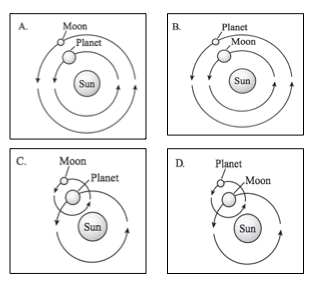
What is C?
The pelican in this video can be classified as this type of organism.
What is a carnivore?
Clouds and precipitation moved across western Massachusetts one evening. The temperature changed from 41°F to 28°F. Of the following, which change in precipitation most likely occurred on this evening?
A. sleet changing to hail B. snow changing to rain
C. rain changing to sleet D. snow changing to hail
What is C, rain changing to sleet?
In the diagram below the north pole on one of the magnets has been identified. Based on the position of the magnets what is the polarity of 1, 2, and 3.

What is
#1 is south
#2 is North
#3 is South
The gravitational force exerted by Earth on objects is directed __________________.
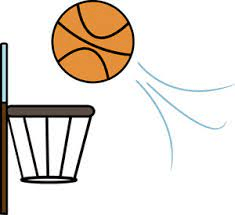
What is downward?
Which of the following actions is most likely part of a test to find the hardness of a mineral sample?
A. heating the sample on a hot plate
B. scratching the sample with a nail
C. hitting the sample with a hammer
D. shining a bright light on the sample
What is B, scratching the sample with a nail?
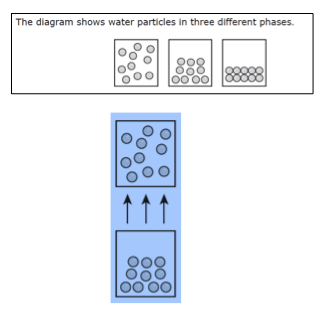
The model highlighted in blue shows the change in water particles on a hot summer day. This word describes the change of matter shown.
What is evaporation? (liquid to a gas)
In the diagram below, which of the following is missing?
A. a battery B. a switch
C. another lightbulb D. another wire

What is A, a battery or power source?
The daily changes of the length and direction of shadows depends on the position and rotation of the Earth in relation to the sun. This picture shows a shadow when the sun is directly overhead at noon.
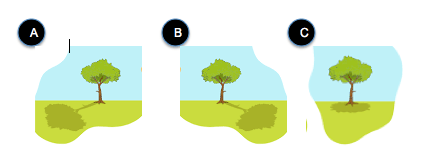
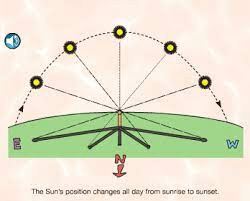 What is C?
What is C?
The arrows in the food chain point in the direction that _____________________ .

What is energy flows?
The arrow always points from the eaten to the eater.
Our Earth has four spheres. Which sphere does the water cycle belong to?
What is the hydrosphere?
The picture shows the forces the teams are using in a tug of war. Who wins and why?

What is a tie because the forces are balanced?
The diagram shows a portion of a fossil record in sedimentary rock. Different rock layers and fossils are clearly visible.
Which layer of rock is the oldest?
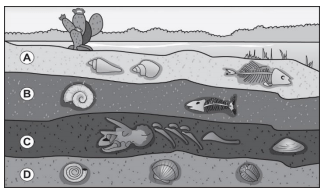
What is layer D?
Two substances, substance A (40g) and substance B (70g), react to form substance C.
The reaction takes place in a closed system. Graph ____ best represents the mass of each substance?
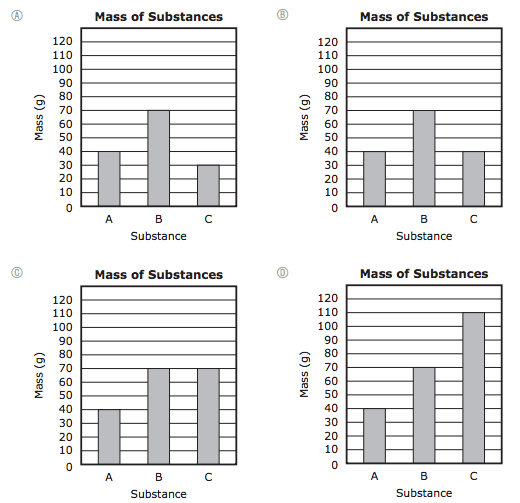
What is d?
The candleholder was designed to solve one of the problems below.
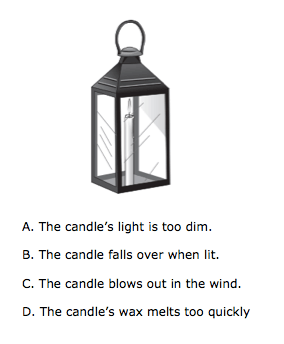
What is C, the candle blows out in the wind?
Jupiter is the largest planet in the solar system. It rotates on its axis once about every 10 hours.
If Earth rotated on its axis once every 10 hour, it would represent ___________
A. a day B. a week C. a month D. a year
What is a day?
These organisms break down dead and decaying matter and return matter in the form of nutrients back into the ecosystem.
What are decomposers?
These words would describe each part of the water cycle.
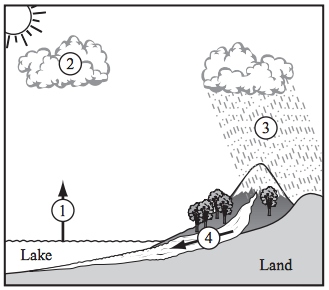
What is evaporation, condensation, precipitation, and runoff?